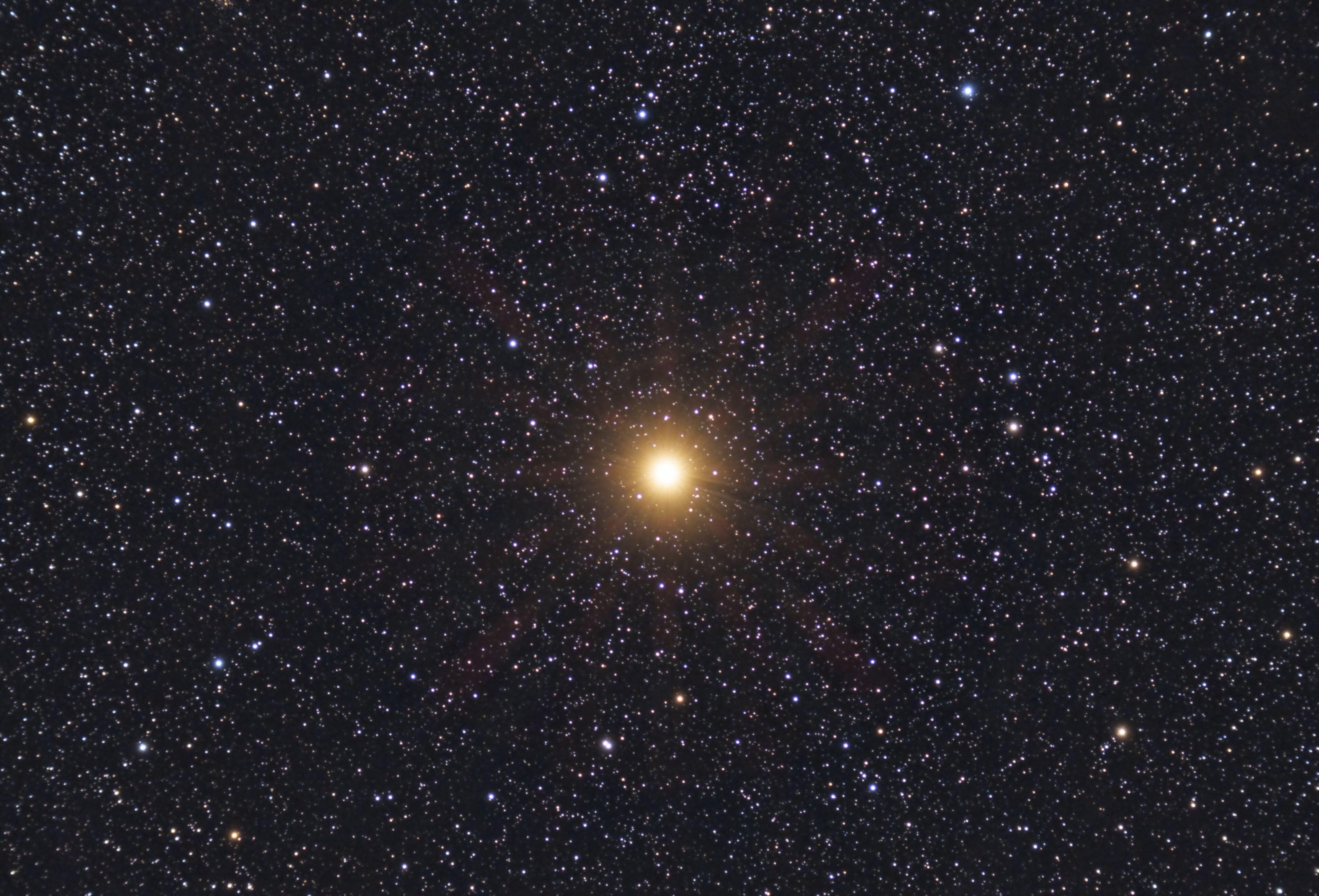Some sky watchers this month will witness Betelgeuse, one of the brightest and best-known stars in the sky, nearly disappear. Mere seconds later—despite astronomers’ hopes that the star will meet its explosive end someday soon—it will return, shining just as brightly as ever.
Betelgeuse’s brief blip of obscurity will mark a cosmic coincidence: an asteroid will block the star from view over a thin strip of Earth’s surface. Scientists are hailing this celestial alignment as a once-in-a-lifetime occasion that, they hope, will permit them to glimpse Betelgeuse’s ever changing surface of hot and cold patches in the best resolution to date.
“This is a great opportunity that nature is giving us, so we have to exploit it,” says Miguel Montargès, an astrophysicist at the Paris Observatory, who has helped coordinate dozens of amateur observers to try to watch the event.
The opportunity comes courtesy of a sizable asteroid called Leona, which astronomers first spotted in 1891. On its own, Leona is just another space rock cluttering up the asteroid belt between Mars and Jupiter. But at 8:17 P.M. ET on December 11 Leona will slip directly between Earth and Betelgeuse, a red supergiant star that, unlike the asteroid, has been recognized by countless generations of humans around the world.
Betelgeuse marks one bright shoulder of the constellation Orion and is located just 650 light-years from Earth. Although its brightness regularly rises and falls, the star grabbed the spotlight in 2019 when astronomers realized it was fading rapidly in what became known as the “Great Dimming.” Despite hopes that earthlings would get a front-row seat to the explosion that will mark the star’s supernova end sometime in the next 10,000 to 100,000 years, Betelgeuse has persisted—although the star’s brightness has been changing more quickly than it used to.
“It has not recovered yet from the Great Dimming,” says Andrea Dupree, an astrophysicist at the Center for Astrophysics | Harvard & Smithsonian. “It’s still bobbling around, the poor thing.” Although the star’s evolution is difficult to predict, she thinks it may take another year or two for Betelgeuse to settle down.
Throughout recent years, astronomers have studied Betelgeuse using the Hubble Space Telescope, observatories on the ground and even a Japanese weather satellite. But Leona’s occultation may give scientists a truly unique view of the star.
To understand how special the event is, consider the total solar eclipse that will occur in April 2024. During the climax of the eclipse, viewers across a narrow strip of Earth’s surface will see the moon pass directly in front of the sun. Because the two bodies appear as the same size in our sky, the moon will entirely block the visible disk of the sun and expose the faint, wispy halo called the corona, a layer of our home star’s atmosphere that scientists otherwise cannot see from Earth.
Similarly, the roughly 40-mile-wide Leona appears in the sky as about the same size as the enormous but very distant Betelgeuse. This will allow the asteroid to block all or most of the star’s light when the two bodies perfectly align. But whereas Earth experiences a total solar eclipse every 18 months or so, occultations of bright stars such as Betelgeuse are extremely rare, occurring less than once a century, Montargès estimates.
Observers of the occultation will measure the star’s brightness multiple times throughout the event, which will last just seconds. By combining these measurements with what scientists know about the shape of Leona, astronomers can identify brighter and darker areas of Betelgeuse’s surface, corresponding to hotter and cooler patches of the star.
Preparations included two main tactics. First, astronomers needed to better understand Leona—which coincidentally required observing occultations of smaller, fainter stars by the space rock. With these data, scientists could refine calculations of the asteroid’s size, shape and orientation that will help them interpret the Betelgeuse observations. Leona may even boast a satellite, says Raoul Behrend, an astronomer at Geneva Observatory, who has been studying the asteroid. He estimates a 10 percent chance that Leona has a moon, although he says it’s unlikely that any single observer would be able to see both the asteroid and a hypothetical satellite cross Betelgeuse.
Second, scientists needed to position skilled amateur astronomers with high-tech equipment along the path of occultation, which stretches from Mexico across the tip of Florida, through southern Spain, Italy, and Greece and across Central Asia. The better the geographic coverage on the ground, the more complete the resulting map of Betelgeuse’s surface. But some locations offer more promising weather or better odds of being able to reach another location along the path, should clouds appear—all factors at play in gathering as much data as possible.
Even last week, preparations continued. One team of scientists was working to enlist the European Southern Observatory in Chile, far beyond the occultation’s path, to study the unobscured Betelgeuse. Meanwhile Dupree hoped to arrange for ultraviolet observations, which can be acquired only by satellite and would show the massive atmosphere surrounding Betelgeuse’s visible surface. And Jose-Luis Ortiz, an astronomer at the Institute for Astrophysics of Andalusia in Spain, was scrambling to recruit a stratospheric balloon that could loft cameras above any threatening clouds.
Whatever observations scientists can cobble together will offer much needed insight into the elusive mechanics of red supergiant stars, which burn increasingly exotic fuel as they age. Currently, astronomers believe Betelgeuse is fusing helium into carbon; the star must subsequently turn its carbon into oxygen, silicon and then iron. Finally, Betelgeuse will run out of fuel, collapse under its own weight and explode, scattering elements crucial for life into space and leaving behind a dense stellar corpse.
It’s this fate that makes Betelgeuse so compelling, and scientists want to better understand how a red supergiant meets its end. But right now astronomers’ models of these stars don’t quite work. Although they show a star’s roiling surface—the patchwork of dark and light scientists hope to glimpse during occultation—they never demonstrate the constant stream of wind the star emits or the sort of dusty outburst that astronomers believe caused the Great Dimming. That means we’re missing something important about these stars, Montargès says—and he hopes that Leona’s interference could ultimately provide vital information on Betelgeuse’s long-awaited finale.
“Ultimately, of course, this is our goal,” he says. “If we know how red supergiants are living, we can better predict their deaths.”




